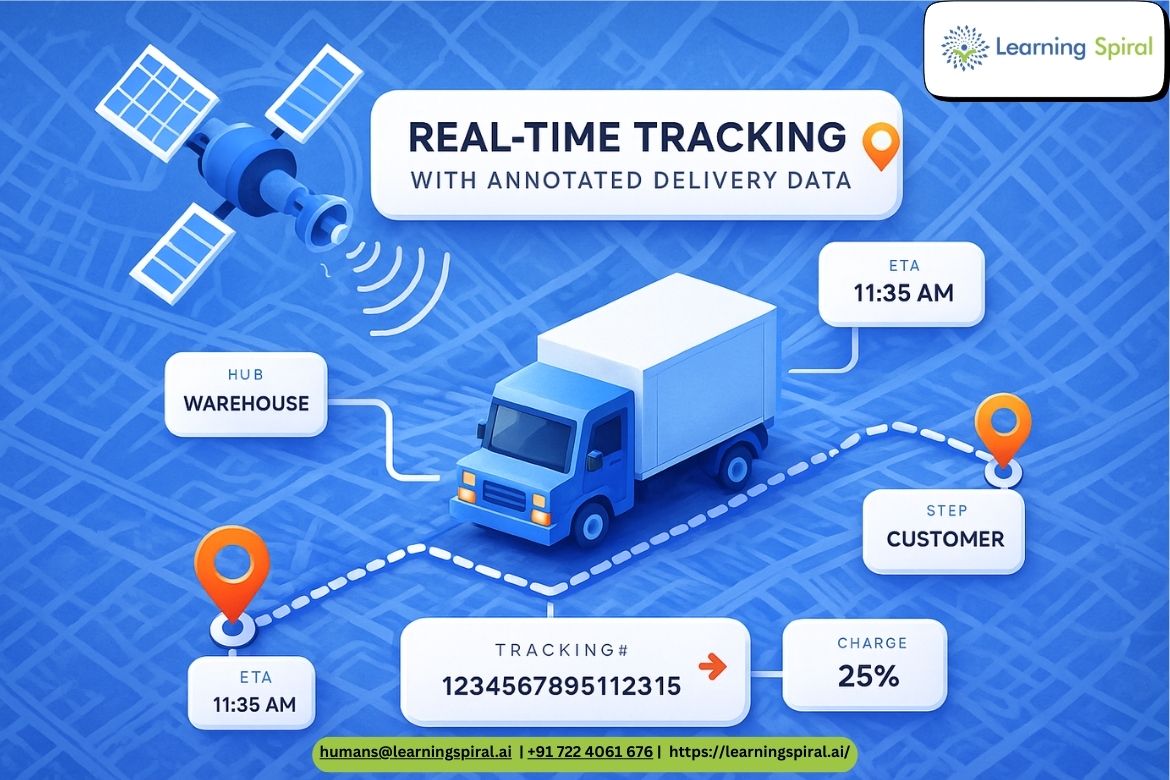Introduction to Multi-Class Annotations in AI
The need for effective and efficient machine learning models is rapidly growing across industries like retail, healthcare, and logistics. One of the most crucial steps in training these models is data annotation—specifically, the multi-class annotation of product categories. Tagging products accurately with multiple labels enhances AI performance by teaching models to recognize different product types with a high level of precision.
In this post, we’ll dive into the significance of multi-class annotations, how they contribute to AI model accuracy, and how Learning Spiral AI’s expert data labeling services can help you build robust AI systems with highly reliable data.
What Are Multi-Class Annotations?
In machine learning, annotations refer to the process of labeling data in a way that can train AI models. These annotations can be applied to images, text, audio, or video content.
Multi-class annotation refers to labeling a single data point with more than one category or class. For example, an image of a product could be tagged with multiple labels such as “red,” “shirt,” and “cotton,” to specify different aspects of the product. This provides AI models with a richer, more complex understanding of each piece of data, allowing them to recognize a broader array of characteristics and classify data more accurately.
In the context of product categorization, multi-class annotations allow AI models to perform tasks like identifying products from various categories, comparing multiple attributes, and even predicting cross-category relationships.
Why Multi-Class Annotations Matter for AI Model Accuracy
The accuracy of an AI model is directly linked to the quality and diversity of the data it learns from. Without multi-class annotations, an AI model may fail to recognize subtle yet important variations in product characteristics. This lack of accuracy can lead to poor performance in real-world applications, such as incorrect product recommendations or inaccurate search results.
Here’s why multi-class annotations are vital for improving AI model accuracy:
-
Enhanced Classification: Multi-class annotations teach AI models to recognize multiple features of a product, improving its ability to classify and categorize more precisely.
-
Better Training Datasets: Providing comprehensive, labeled datasets ensures that machine learning algorithms receive the data they need to differentiate between similar objects, even when they share common attributes.
-
Rich Contextual Understanding: With multi-class annotations, AI models can comprehend relationships between different product features, such as “red” and “shirt” or “leather” and “shoes,” which enhances the accuracy of product categorization.
-
Improved User Experience: AI systems trained with multi-class data are more adept at generating relevant search results, making product recommendations, and driving personalization for users.
Applications of Multi-Class Annotations
Multi-class annotations have far-reaching applications in several domains, including e-commerce, retail, and inventory management. Here are some examples where these annotations significantly improve AI models:
-
E-commerce Product Search: Tagging products with multiple attributes such as size, color, material, and style allows AI models to provide highly relevant and precise search results. Customers can easily find what they’re looking for based on specific characteristics.
-
Retail Inventory Management: By using multi-class annotations, AI can more effectively track inventory and monitor stock across various categories. This helps retailers improve operational efficiency and reduce stockouts.
-
Cross-Selling & Upselling: When products are tagged with multiple categories, AI can recommend related items more effectively. For example, if a shopper buys a “men’s jacket,” the AI might suggest “casual shirts” or “winter accessories.”
-
Product Recommendations: Machine learning models trained with multi-class annotations offer highly personalized product recommendations, which can significantly increase conversion rates.
How Multi-Class Annotations Work in Data Labeling
For AI models to effectively use multi-class annotations, the data labeling process must be meticulous and consistent. Here’s how Learning Spiral AI ensures high-quality annotations:
-
Bounding Box and Segmentation: Products are marked with bounding boxes to highlight their location, making it easier for AI to isolate the product from its background. This technique is crucial for image-based data labeling.
-
Attribute and Tagging: Each product is tagged with multiple attributes, such as color, material, or usage. This allows the AI model to understand the product from various angles, such as “red cotton shirt” or “leather brown shoes.”
-
Human-in-the-Loop Expertise: Our annotators provide in-depth knowledge about product characteristics, ensuring that even the most subtle distinctions are captured accurately.
-
QA and Consistency: We implement stringent quality assurance processes to ensure that multi-class annotations are consistent across large datasets. This consistency is vital for ensuring that your AI model performs reliably.
Learning Spiral AI’s Expertise in Multi-Class Data Labeling
At Learning Spiral AI, we specialize in data labeling services designed to meet the complex needs of AI-driven industries. Our expert team ensures that your datasets are annotated with precision, enabling AI models to achieve higher accuracy in product classification and categorization.
Our services include:
-
Image and Video Annotation: Tagging products in images and videos with multiple classes to ensure comprehensive training data.
-
Text and Audio Annotation: Labeling product descriptions, reviews, and audio clips with multiple categories to improve AI’s understanding of product features.
-
Large-Scale Annotation Projects: We handle large-scale, multi-class data labeling projects, ensuring timely delivery without compromising quality.
By partnering with Learning Spiral AI, you can trust that your data is in expert hands, driving your AI projects forward with superior data quality.
The Future of Multi-Class Annotation in AI
As AI continues to evolve, so too does the need for more complex and nuanced data annotations. The future of AI lies in its ability to understand context, infer relationships, and predict outcomes based on multi-class data. As AI models grow more sophisticated, multi-class annotations will continue to be a cornerstone of AI model accuracy, improving everything from product search to personalized recommendations.
Contact Learning Spiral AI for Multi-Class Annotation Services
Are you ready to enhance your AI models with high-quality multi-class annotations? Learning Spiral AI is here to provide expert data labeling services that drive the next generation of AI-powered solutions. Contact us today to discuss how we can help you improve model performance and unlock the full potential of your data.






